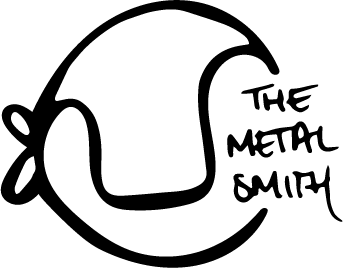COMMISSIONS
Little sparks of an idea can create beautiful objects, especially when two heads are put together.
The process may vary request to request. Generally, the first step is to go through a criteria; things to consider include particular characteristics, materials, time limits and budget. Moving on to the next step requires idea generation and some sketches, perhaps some models before the making begins.
If you’re interested in a commissioned piece, please feel free to get in touch by clicking here.










A commission I was honoured to take on. A lovely lady’s sentimental gold melted and transformed into this little pendant. A combination of 9ct, 18ct and 22ct.
I was given a bit of freedom for this. The design for this pendant wasn’t really drawn out beforehand; she noticed a piece I’d made previously and expressed appreciation for it. I launched straight into prototypes, we picked one and moved to the making. The model was prepared for the casting and the gold was prepared for melting. The piece was cast; a few imperfections tidied up and a few problems solved. I also made a pair of pebble clip-on-earrings with the leftover gold. The pieces were polished et voila!
If you’d like to read more about the ideas that shaped this pendant, click here.








Not necessarily a commission, but a bespoke project. These lovely little folk stand 4 inches tall and are based on two wonderfully helpful people from my university experience. I’ve documented the process somewhat so you can see how it progressed.
I started with an endless number of drawings (initially on post-its and backs of receipts, before being brave and making the move to the sketchbook). I started to be more decisive on specific features and started to consider how these little pieces would look from alternative angles. When cutting up the pieces and putting them together, I used the sketch to make sure I was keeping my proportions. Handy tip for the makers: use masking tape to hold the little rolling pieces in place so you don’t lose them! Fitting the pieces together to ensure a nice clean shape came next and the soldering process swiftly afterwards. The last step was finish. In this situation, ‘finish’ is used in terms of polishing/mattifying/etc. For these little people, I used a combination of two: a rough little tool to create an almost sparkly finish all over, in every nook and cranny, and another to soften it slightly on the easier-to-get-to surfaces and make it a little gentler to touch. I let the aprons be, with the intention of it looking a little grubby (true to reality) and setting it out a little from the rest of the piece, creating a little contrast and stopping the pieces all blending into one.
If you’d like to read more about the sentiment behind these little figures, click here.














A selection of other commissions I’ve taken on.
